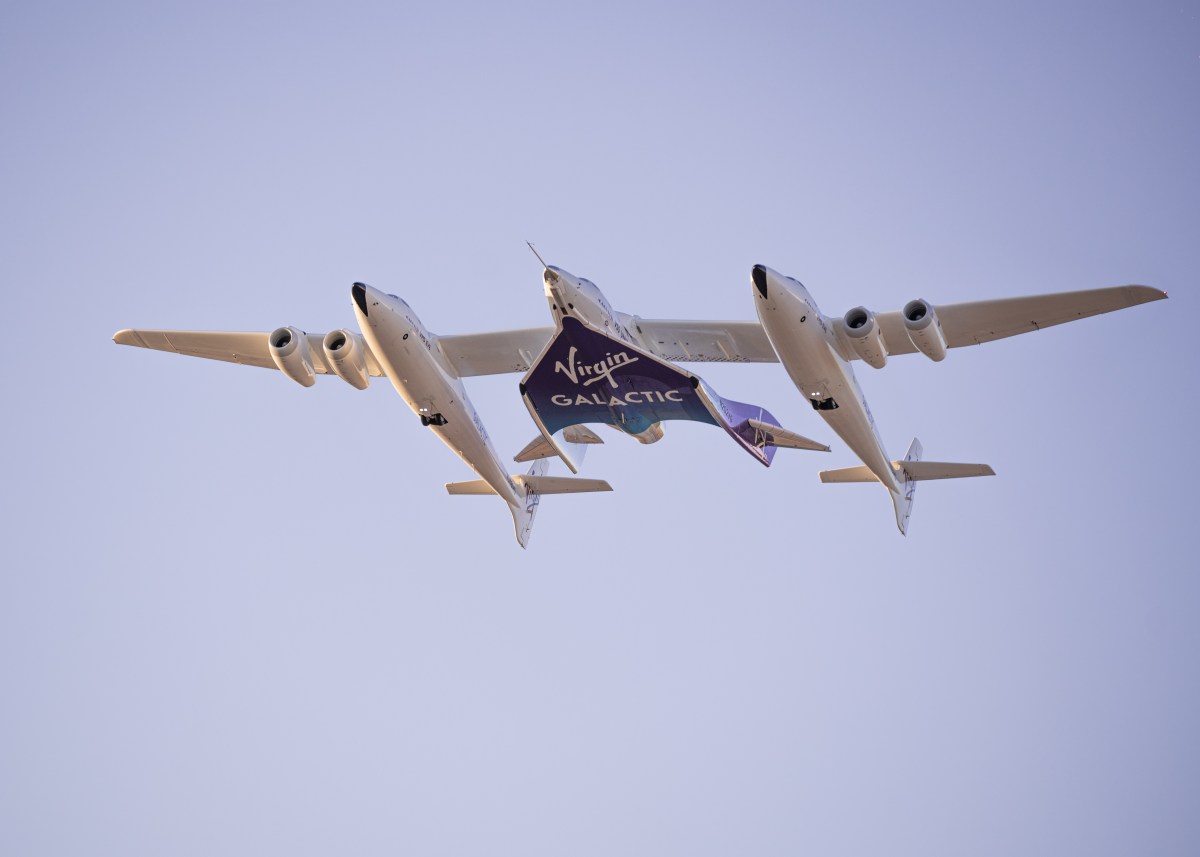Virgin Galactic is working with regulators to investigate an issue with an alignment pin that was discovered after the last crewed suborbital flight in January. During post-flight reviews, Virgin said it discovered that an alignment pin had detached from VMS Eve, the aircraft that carries the suborbital space plane to altitude. The company notified the […]
© 2024 TechCrunch. All rights reserved. For personal use only.
Virgin Galactic is working with regulators to investigate an issue with an alignment pin that was discovered after the last crewed suborbital flight in January.
During post-flight reviews, Virgin said it discovered that an alignment pin had detached from VMS Eve, the aircraft that carries the suborbital space plane to altitude. The company notified the U.S. Federal Administration of the anomaly, and the two are conducting a review, which is standard procedure for issues that arise during a commercial launch.
The alignment pin is a small component that helps ensure the spaceship, called VMS Unity, is aligned properly to the aircraft when the two vehicles are mated on the ground. During flight, the pin also plays an important role in shifting drag and other aerodynamic forces from the spaceship to the aircraft.
“During mated flight, as the vehicles climb towards release altitude, the alignment pin helps transfer drag and other forces from the spaceship to the shear pin fitting assembly and into the pylon and center wing of the mothership,” the company explained in a statement on the anomaly. “The shear pin fitting assembly remained both attached and intact on the mothership with no damage. While both parts play a role during mated flight, they do not support the spaceship’s weight, nor do they have an active function once the spaceship is released.”
That last sentence is important, because the alignment pin detached only after the spaceship was released from VMS Eve. Because the component performed as designed during the mated portion of the flight, the anomaly never posed a safety issue to the vehicles or to the four paying customers and two Virgin pilots on board.
When an anomaly occurs in the course of a mission, the general procedure is for the company to conduct its own investigation into the issue with the oversight of the FAA. The company then submits a final report to the regulator that details the corrective actions it took to prevent the issue from recurring.
It isn’t clear how long the two entities anticipate the investigation to take, but Virgin Galactic seems confident that it will still be able to execute its next flight in the second quarter.
“Virgin Galactic will provide a further update at the completion of the review and will confirm the flight window for the ‘Galactic 07’ mission, which is planned for the second quarter of 2024,” the company said.

Leave a Reply